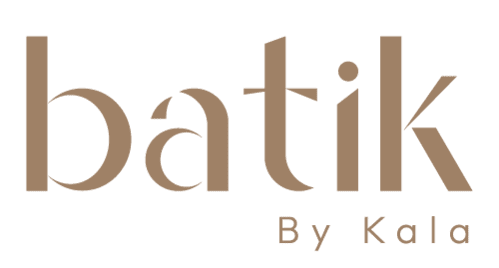Have you ever wondered how nature inspires one of Malaysia’s most treasured art forms? The country’s vibrant textile tradition, recognized by UNESCO, blends intricate designs with deep cultural significance.
Over 40% of these handcrafted pieces come from Kelantan, while Terengganu and Pahang contribute significantly. Islamic influences shape the tradition, favoring floral themes over animal depictions—though butterflies often appear as exceptions.
Every December 3rd, locals celebrate Malaysian Batik Day, honoring this national heritage. Regional styles vary, from bold brushstrokes to delicate color palettes, each telling a story of the nation’s rich landscapes.
The Rich History of Malaysian Batik
Centuries ago, batik techniques traveled across the Java Sea, shaping Malaysia’s textile legacy. This art form’s roots trace back to 13th-century trade between Jambi and Java, where intricate designs first merged with local craftsmanship.
Origins and Javanese Influences
Early artisans used woodblocks to stamp patterns onto fabric. By the 1920s, Kelantan’s craftsmen pioneered wax-resistant dyeing with copper blocks. This shift birthed Malaysia’s signature style—bold, geometric, and deeply symbolic.
Evolution on the East Coast
Terengganu’s batik stands out with soft pastels, while Pahang favors earthy tones inspired by rainforests. Each region’s palette reflects its landscape, creating a vibrant mosaic of cultural significance.
Government Recognition and Batik Day
In 2021, December 3rd was declared Malaysian Batik Day, celebrating its role in national identity. The MARA Institute further elevated the craft, training artisans under the New Economic Policy to preserve this living heritage.
Traditional Techniques Behind Flora and Fauna Batik Motifs Malaysia
The artistry of Malaysian textiles comes alive through two distinct wax-resist techniques. Each method—hand-drawn or block-printed—shapes the final designs with unique precision. Artisans select their approach based on complexity, time, and regional traditions.
Hand-Drawn vs. Block-Printed Batik
Batik tulis (hand-drawn) uses a copper canting tool to apply molten wax. This labor-intensive process requires 20+ layers and takes months to complete. In contrast, block printing employs zinc or copper blocks dipped in beeswax-resin mixtures for faster production.
|
Technique |
Tools |
Timeframe |
Best For |
|
Hand-Drawn (Batik Tulis) |
Copper canting, wax |
2–3 months |
Detailed floral patterns |
|
Block-Printed |
Zinc/copper blocks |
1–2 days |
Geometric repeats |
The Brush Painting Method
Terengganu’s artisans excel in brush painting, freehanding hibiscus blooms with dyes. The wax mixture—beeswax for flexibility, paraffin for crackle effects—ensures crisp lines. This hybrid technique blends spontaneity with control.
Regional Variations: Kelantan, Terengganu, and Pahang
Kelantan favors geometric spirals, while Terengganu’s pastel designs mimic coastal flora. Pahang’s earthy tones mirror mangrove roots. Kraftangan Malaysia certifies quality, ensuring export-ready textiles meet global standards.
Iconic Motifs: Celebrating Nature in Batik
Nature’s elegance weaves through every thread of Malaysia’s textile artistry. These designs are more than patterns—they’re visual stories of identity and heritage. From delicate petals to bold spirals, each motif carries deep symbolism.
Floral Designs: Hibiscus, Chempaka, and Geometric Patterns
The hibiscus, Malaysia’s national flower, dominates formal attire as a symbol of pride. Chempaka flowers, often used in weddings, represent purity with their soft, layered petals. Geometric spirals mimic rainforest vines, reflecting Orang Asli influences.
Fauna Exceptions: Butterflies and Marine Life
Butterflies symbolize transformation, their wings breaking Islamic tradition as the only fauna commonly depicted. Coastal communities like Terengganu weave sea turtles into designs, honoring marine ecosystems.
Symbolism and Cultural Narratives
Colors speak volumes—turmeric yellows signify prosperity, while indigo blues from Tarum plants evoke spirituality. Datin Seri Endon modernized these motifs, blending tradition with 21st-century fashion.
- Hibiscus motifs: Worn by officials during national events.
- Marine patterns: Celebrate Terengganu’s coastal biodiversity.
- Dye symbolism: Natural ingredients tie colors to cultural values.
Conclusion
From royal courts to global runways, Malaysian batik continues to evolve while honoring its roots. Over 78% of civil servants wear batik monthly, reflecting its cultural significance.
Sustainable practices like natural dyes and ethical block carving revive ancient methods. Meanwhile, designers fuse tradition with modern techwear, creating batik sneakers and sleek silhouettes.
This art contributes RM 230 million yearly to the nation’s creative economy. Support local artisans by exploring cultural tourism—each purchase preserves a living heritage.
As UNESCO-recognized tradition meets innovation, batik proves its timeless appeal in a changing world.
FAQ
What makes Malaysian batik unique compared to other types?
Malaysian batik stands out due to its bold colors, intricate patterns, and strong nature-inspired themes. Unlike Javanese batik, it often uses the brush painting method, creating softer edges and vibrant designs.
How is hand-drawn batik different from block-printed batik?
Hand-drawn batik, or batik tulis, involves applying wax with a canting tool for detailed designs. Block-printed batik uses copper stamps for faster production, making it more affordable but less intricate.
Why are floral patterns so common in Malaysian batik?
Flowers like hibiscus and chempaka symbolize beauty and cultural identity. The Malaysian government also promotes these designs to highlight the nation’s natural heritage.
Are animal motifs allowed in Malaysian batik?
While floral themes dominate, some exceptions exist, such as butterflies and marine life. These are stylized to respect cultural and religious sensitivities.
What role does the East Coast play in batik production?
States like Kelantan and Terengganu are famous for their traditional techniques. The East Coast is a hub for authentic handcrafted textiles, preserving centuries-old methods.
How has the government supported batik in Malaysia?
Initiatives like Batik Day and grants for artisans help sustain this art form. The government also promotes it as a national cultural treasure.
